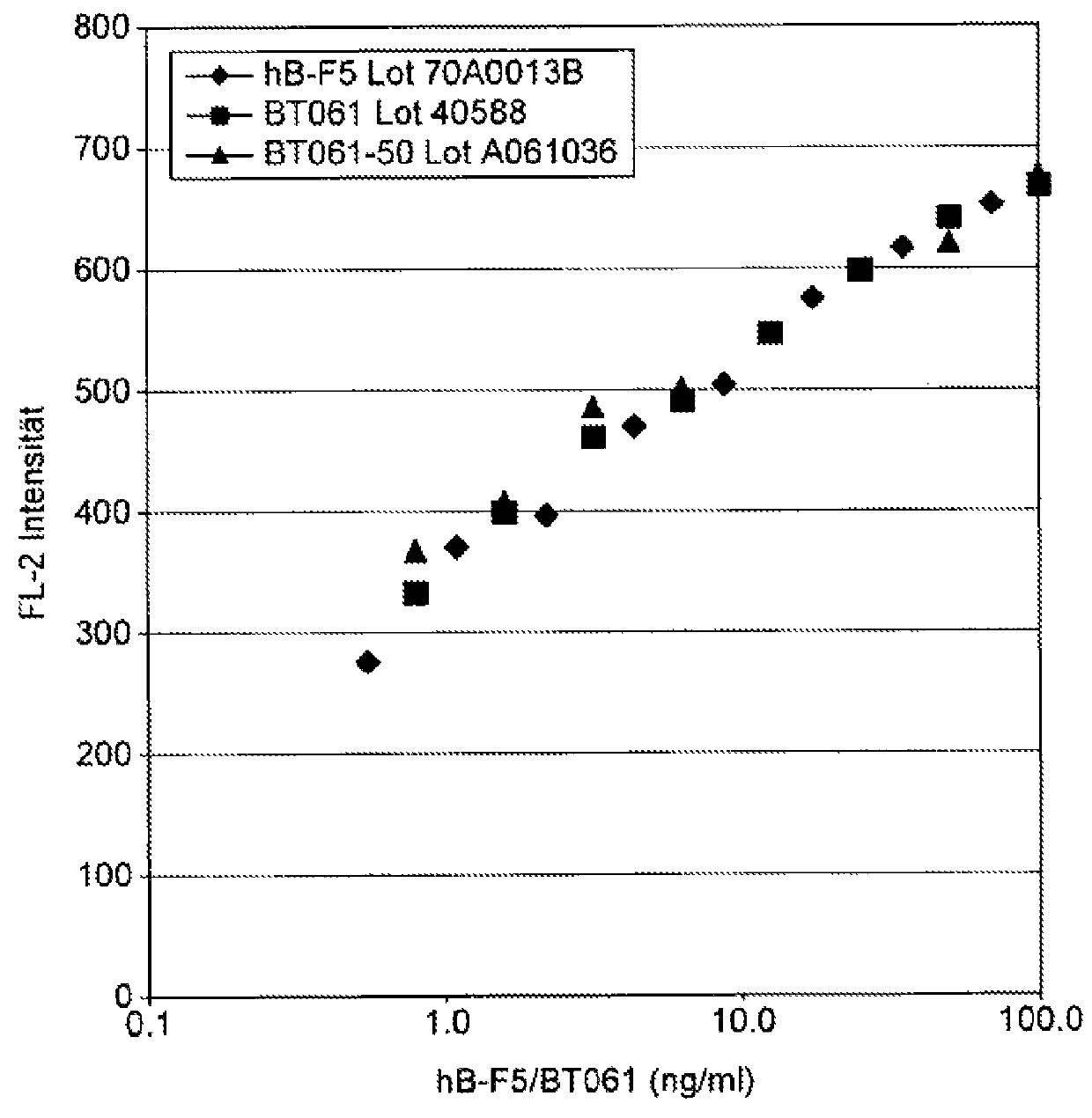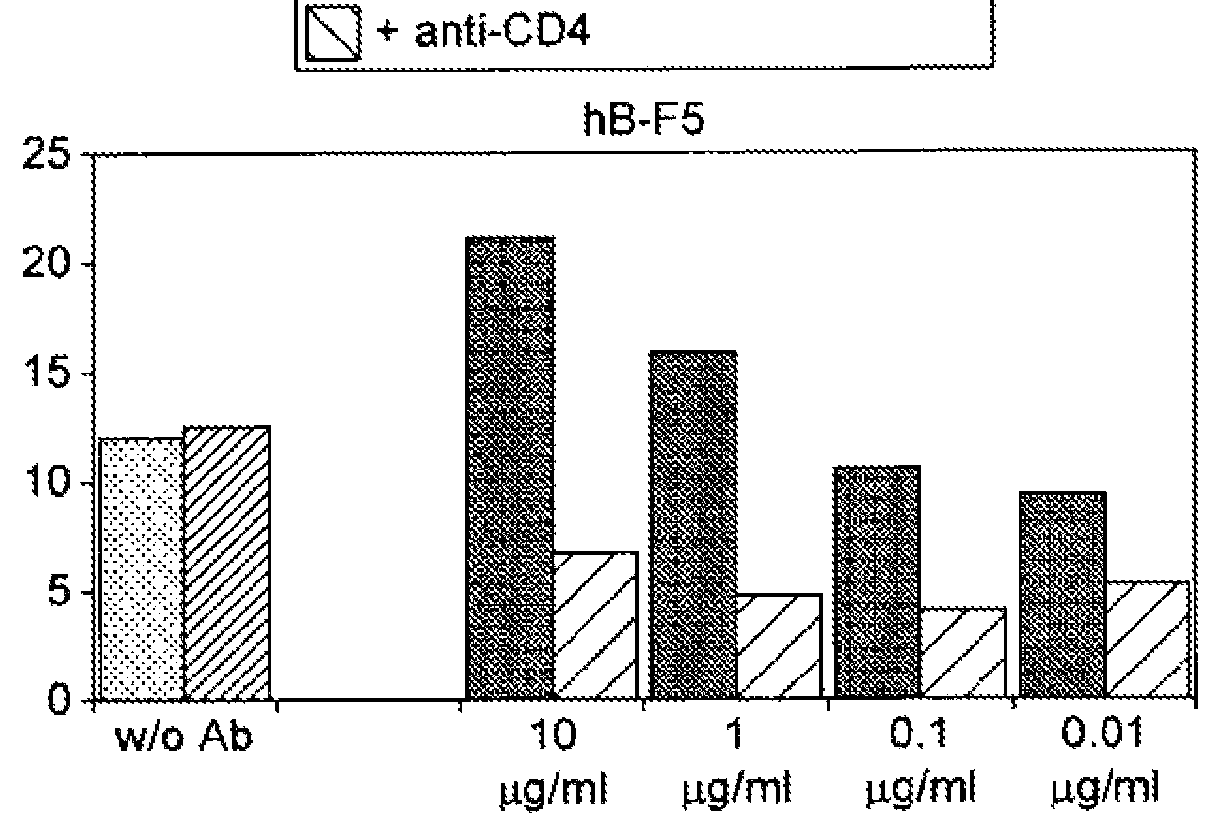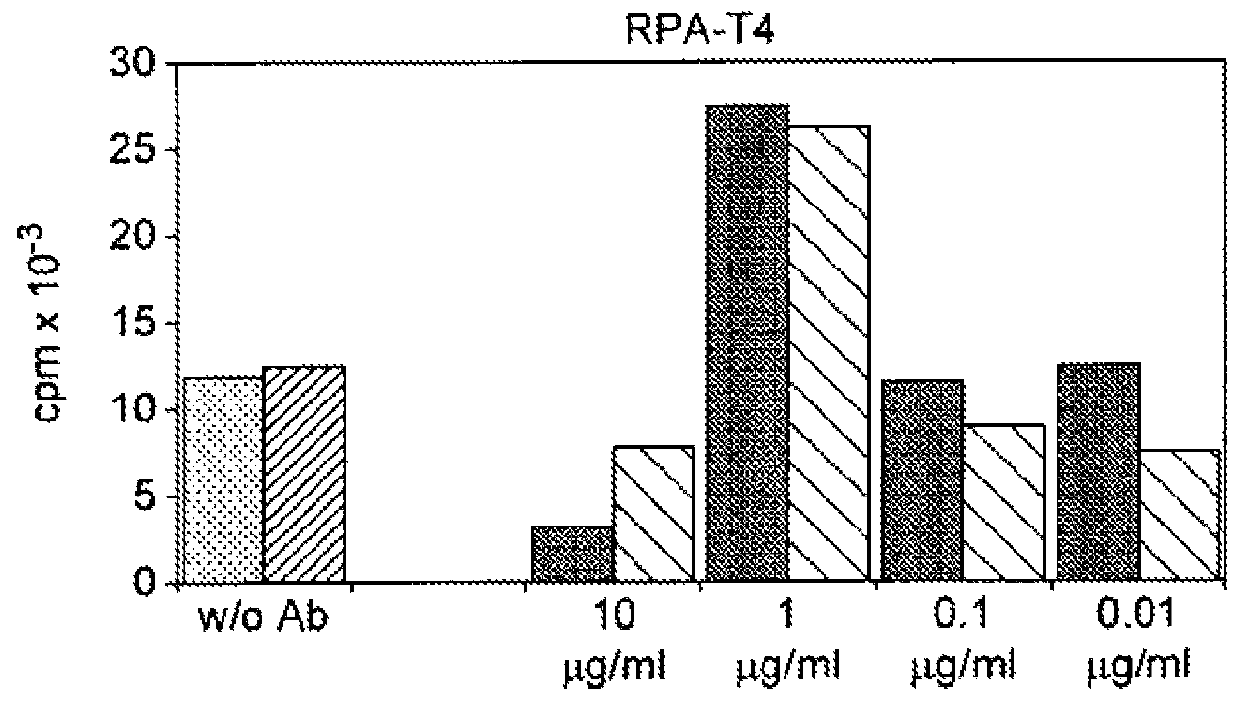Method for treating psoriasis
a psoriasis and treatment method technology, applied in the field of autoimmune diseases, can solve the problems of multiple risks, not only harmful functions, and the overlapping of actions, and achieve the effect of convenient administration
- Summary
- Abstract
- Description
- Claims
- Application Information
AI Technical Summary
Benefits of technology
Problems solved by technology
Method used
Image
Examples
example 1
Binding of BT061 to Primary Human Peripheral Lymphocytes (Results Shown in FIG. 1)
[0168]Method
[0169]Human PBMCs were isolated by density gradient centrifugation and stained with FITC-labelled anti-CD3 antibody (345763; Becton / Dickinson) and serial dilutions of BT061. BT061 binding was detected with an phycoerythrin labelled human IgG antibody (109-116-098; Jackson, Immunoresearch). By flow cytometric analysis the mean fluorescence intensity of CD3+ BT061 binding lymphocytes was determined.
[0170]The results are set out in FIG. 1.
[0171]Results
[0172]BT061 binds to human lymphocytes at low concentrations. Below 10 ng / ml the half maximal saturation of binding is observed. Saturation is found at 100 ng / ml. The concentrations are as expected for patients which receive doses of 30 and 300 μg.
example 2
Inhibition of Proliferation of CD8+ T-cells by BT061-stimulated T reg Cells (Results Shown in FIG. 7)
[0173]Method
[0174]Isolation of Human T Cell Populations
[0175]CD25high Tregs were separated from buffy coats and / or leukapheresis of healthy volunteers by magnetic bead cell separation according to the following protocol.
[0176]CD4+CD25+ regulatory T cells were isolated from buffy coats of healthy volunteers by 2 steps. In the first step CD4+ T cells using 2-4 μl CD4-MACS-Multisort-Beads (Miltenyi Biotec) per 107 PBMCs were positively selected. After 15 minutes of incubation, magnetic selection was performed. In the next step positively isolated cells were depleted of CD25− expressing non-CD4 cells with CD8-, CD19- and CD14-Dynabeads (Dynal, Oslo, Norway). The resulting CD4+CD25+ T cells were 95-98% pure. Untouched CD4+CD25− T cells were isolated by negative selection from PBMC by depleting CD8, CD19, CD56, CD14, CD235a, CD25 and CD45RO expressing cells with Dynabeads. The purification...
example 3
Clinical Trial of BT061 in Patients with Moderate to Severe Chronic Psoriasis (Results Shown in FIGS. 8A to 8H, FIGS. 9A to 9H and FIGS. 14A and 14B)
[0183]The ability of hB-F5 BT061 to treat an autoimmune disease is being tested on 56 patients suffering from moderate to severe chronic psoriasis. The trial comprises a single dose escalation study to assess the safety and efficacy of hB-F5.
[0184]The conditions of the trial are as follows:
[0185]The 56 patients are divided into seven dose groups, each group comprising eight individuals. Five dose groups (dose groups I to V) are to receive the antibody or placebo by intravenous administration and two dose groups (dose groups VI and VII) are to receive the antibody or placebo via subcutaneous administration. Two patients in each dose group receive a placebo, while the remaining six patients in each dose group receive a dose of BT061. In dose group I the six patients receive 0.5 mg of intravenous BT061. In dose groups II to V the six patie...
PUM
| Property | Measurement | Unit |
|---|---|---|
| concentration | aaaaa | aaaaa |
| volume | aaaaa | aaaaa |
| volume | aaaaa | aaaaa |
Abstract
Description
Claims
Application Information
 Login to View More
Login to View More - R&D
- Intellectual Property
- Life Sciences
- Materials
- Tech Scout
- Unparalleled Data Quality
- Higher Quality Content
- 60% Fewer Hallucinations
Browse by: Latest US Patents, China's latest patents, Technical Efficacy Thesaurus, Application Domain, Technology Topic, Popular Technical Reports.
© 2025 PatSnap. All rights reserved.Legal|Privacy policy|Modern Slavery Act Transparency Statement|Sitemap|About US| Contact US: help@patsnap.com



